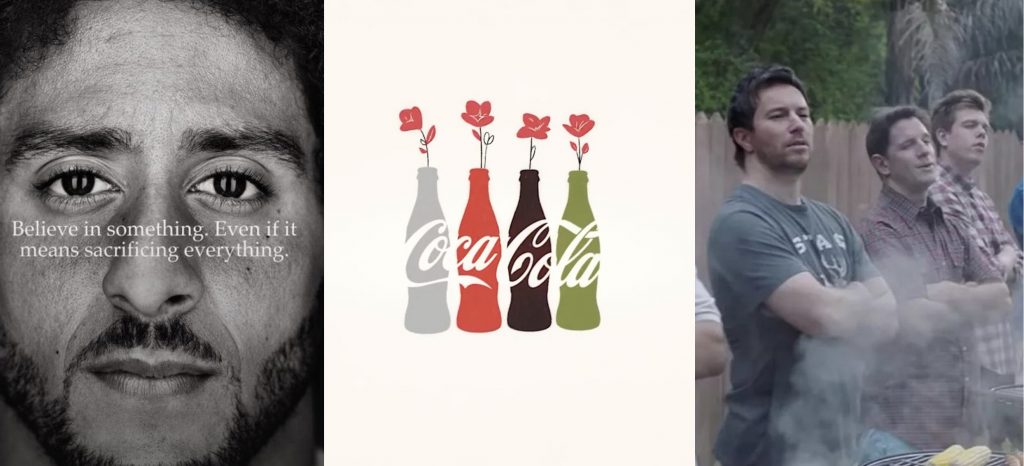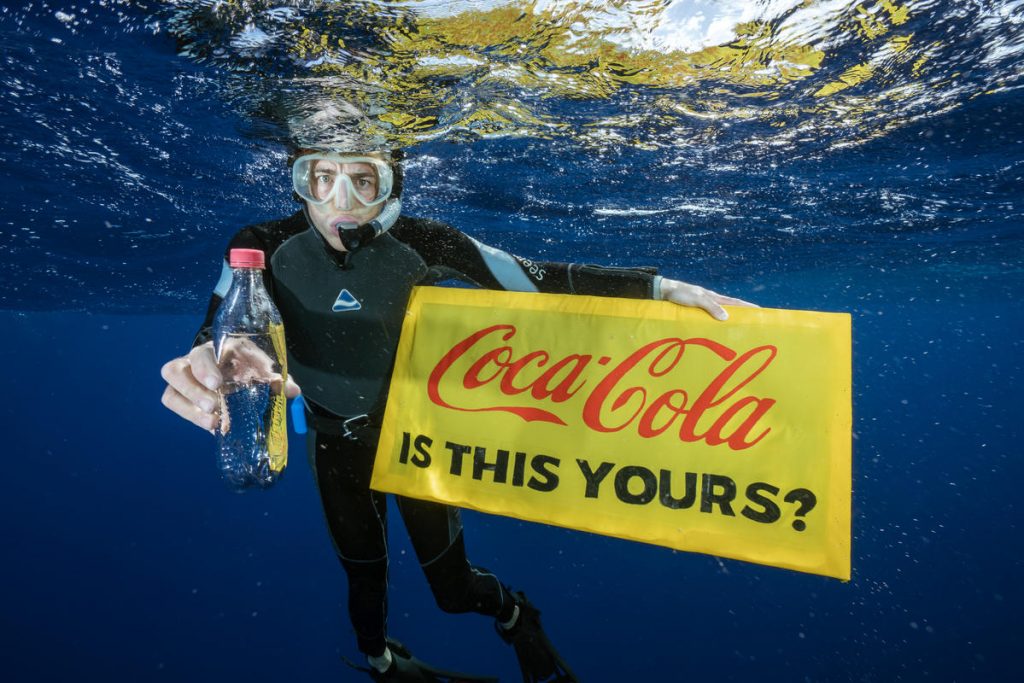
Social Justice for Sale (Part I of Selling Diversity, Unity & Social Justice) addressed how recent advertisements from companies like Coca-Cola, Nike and Gillette promote varying aspects of social responsibility via campaigns of unity, diversity, and social justice. Is this the dawn of the ethical corporation? Is this about changing minds and perceptions to create unity? Do these campaigns challenge the system or is this just about maintaining a status quo?
(To read the first half of the series click here for Part I)
Selling Diversity, Unity & Social Justice Part II:
The Hidden Costs of Super Commercials of Unity & Social Justice
Since that Coca-Cola hilltop commercial first played 50 years ago, the image of inclusivity the brand portrays today is salient as ever. Yet, the company is accused of dehydrating communities around the world of one of the most vital resources: water ( In Town With Little Water, Coca-Cola Is Everywhere. So Is Diabetes). Greenpeace notes that Coca-Cola, PepsiCo, and Nestlé were found to be the worst plastic polluters worldwide in global cleanups and brand audits. The company is also charged with violating workers’ rights in a number of countries such as Columbia, Turkey, Guatemala and Russia (Coca-Cola: Drinking the World Dry). Who are they really including in their messages of “unity and positivity?”

Coca-Cola bottle found adrift in the garbage patch.
The crew of the Greenpeace ship MY Arctic Sunrise voyage into the Great Pacific Garbage Patch document plastics and other marine debris. The Great Pacific Garbage Patch is a soupy mix of plastics and microplastics, now twice the size of Texas, in the middle of the North Pacific Ocean. (Greenpeace)
While Nike, supposedly supports social justice, splashing billboards with Kaepernick, the company is being sued by two former female employees claiming a culture of sexual harassment and gender bias. According to the New York Times, the lawsuit claims “that Nike spent years hiring women at lower salaries than men, discriminating against women during performance reviews and promoting female employees less frequently than male counterparts doing comparable work.” And another article highlights the ongoing sexual harassment taking place within the company: “for too many women, life inside Nike had turned toxic.” Whose social justice does Nike really care about?
So, while we can applaud Nike’s effort to align with Kaepernick, we should remember their campaign was a well thought out calculation to gain market share. It made “good business sense,” and as stated by Mark Parker, the chief executive of Nike, the campaign created “record engagement with the brand.” Following the advert, Nike’s stock surged to an all-time high. All of this during a time the corporation was dealing with sexual harassment charges.
Proctor and Gamble continues to profit from years of promoting images of a gender divided world via their Gillette brand. It’s a company that colour codes products based on a constructed gender divide — all for the purpose of selling multiple items to a house that only needs one item. For years Gillette’s adverts dictated the stereotype of what a man and woman should be, how they should act, and particularly how they should make themselves presentable to society. In many ways Gillette is complicit in the very thing (toxic masculinity) they challenge.
Primer on the history of Gendered Marketing.
The contradiction of these “social responsible” adverts is being pointed out by many, including one article over at Flare:
“Had Gillette truly wanted to pave the way for actual change in gender inequities, they could have taken a far bolder step. The men who disproportionately figure in P&G’s U.S.’s executive (only nine of 30 are women; its 13-member board of directors features four women) could have acted ‘the right way’ and also in a truly radical way: by ending the absurd gender-ification and price discrimination perpetuated in the marketing of shaving products.”
For corporations with strongly gendered products lines like Gillette, social justice campaigns are carefully crafted and calculated to determine the potential sales growth from one segment of the political spectrum. As Proctor and Gamble’s own CFO Jon Moeller states “it’s a part of our effort to connect more meaningfully with younger consumer groups.” The advert received “unprecedented levels” of media coverage and customer engagement. Even with a backlash to the advert, sales are staying steady and they continue to gain more customers. These campaigns capitalize on the current state of divisiveness around political issues.
Rather than challenging the system, these commercials reinforces the status quo of what many already agree with politically or morally. Corporations align themselves with current trends to gain market share by associating themselves with various social justice movements — maintaining the system, maintaining their profits, and maintaining their supposed moral imperatives.
So, as we sit back with a Coke in hand, wearing a Nike branded NFL jersey, and with a clean shave courtesy of Gillette, let’s remember what these advertisements are selling: identities. They are commodifying images of the globally unified citizen and the social justice warrior. That you too can be a socially responsible consumer by aligning with their products. While one may agree with the messages being promoted, corporations conduct risk assessment to gauge the outcomes from these types of campaigns to protect their bottom line.
It should not be surprising that profits are the driving force for these corporations. So, let’s ask whose notion of unity or diversity they have in mind when they advertise to us? Is it the people that are suffering from water shortages around the world due to poor business practices? Whose claims of social justice are supported? Does it include women who are sexually harassed at their workplace? What is at stake when challenging long held gender stereotypes? Is it people or profits?
Corporations do not make objective claims about inclusion, diversity, or social justice. These super commercials are meant to conceal the other costs associated with the products we buy, the costs that much of the rest of the world must bear.

Excellent posts, Jason. I have found myself thinking similar thoughts more and more as companies in the UK (for example) seem annually jump on the Pride bandwagon… adorning their offices, retail outlets, logos etc with rainbow flags to get in on the party and virtue signal…. It very much seems like one “has to be seen” celebrating Pride… the social cost of not “being seen” to do so simply mustn’t make commercial sense.